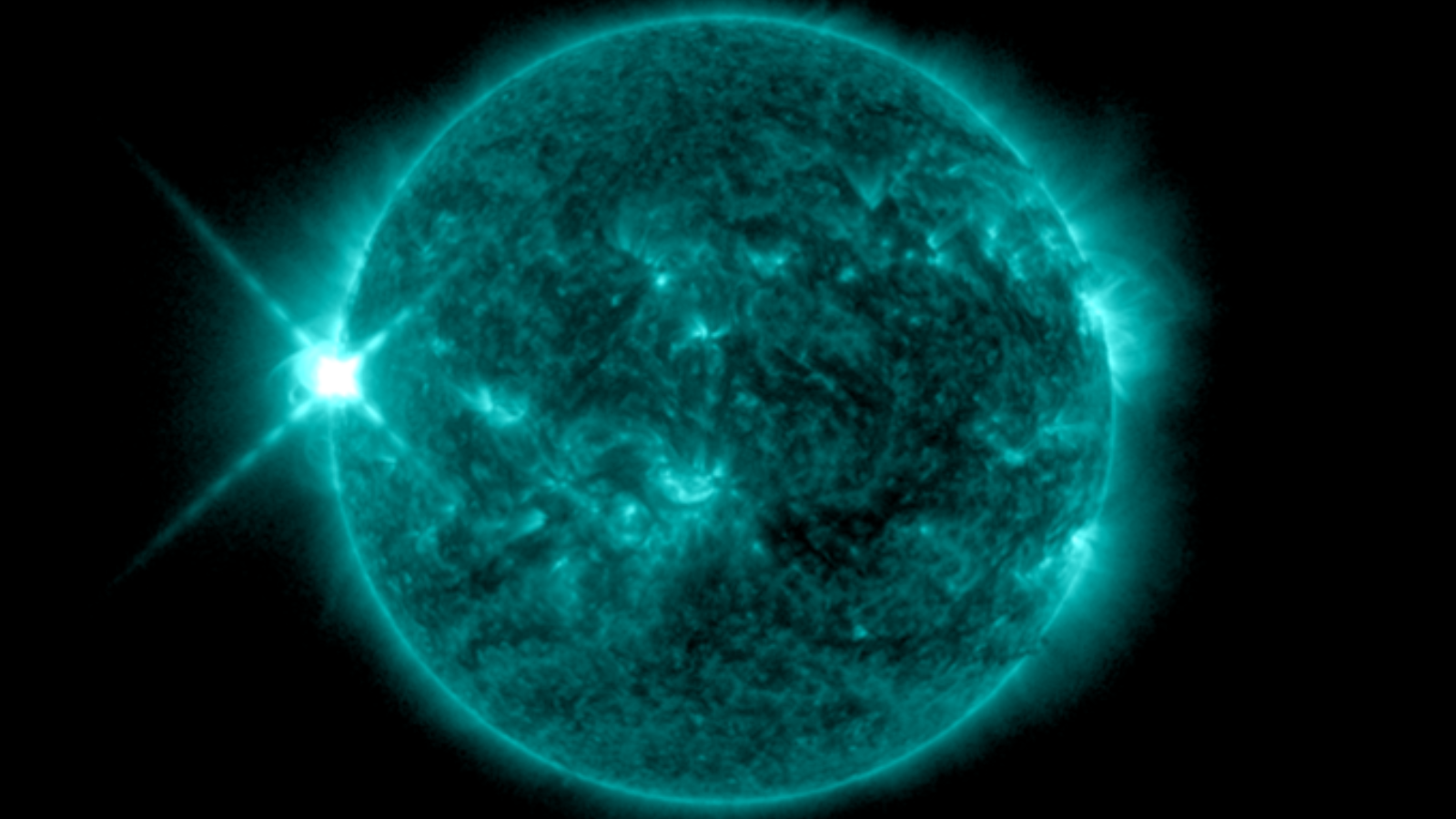Coronal mass ejection from colossal New Year's Eve solar flare will strike Earth today
A coronal mass ejection from the X-5 class flare, the strongest flare of solar cycle 25, will likely trigger geomagnetic storms when it hits Earth.

Earth will be struck today by a coronal mass ejection from a huge solar flare that erupted from the sun on New Year's Eve.
The New Year's Eve flare created a CME, a huge bubble of plasma from a region of the sun called the corona, which is equivalent to the sun's outer atmosphere, and this has an Earth-directed component. Though this massive ejection of plasma will only graze the magnetic bubble surrounding our planet Tuesday (Jan. 2), the magnetosphere, it could trigger a geomagnetic storm that could affect communications and power infrastructure.
The coronal mass ejection CME was hurled into space by an X-class solar flare that burst from the surface of the sun at 4:55 p.m. EST (2155 GMT) on Sunday (Dec. 31). It is the most powerful flare that has happened on the sun during the current solar cycle, solar cycle 25, which began in Dec. 2019. In fact, the flare that ended 2023 with a bang is the largest that has been observed since Sept. 10, 2017, according to the Space Weather Prediction Center of the National Oceanic And Atmospheric Administration (NOAA).
This Earth-directed CME component has the potential to trigger a minor or "G1" geomagnetic storm. Storms like this have the capability to cause weak fluctuations in power grids and could have minor impacts on satellite operations. In addition to this, G1 geomagnetic storms can give rise to striking auroras, beautiful light shows seen over Earth, usually at higher latitudes.
Related: Sun unleashes monster X-class solar flare, most powerful since 2017 (video)
The source of the flare was an active region of the sun designated NOAA 3536, that corresponds with a group of sunspots called NOAA 3514. The same region launched an earlier powerful solar flare, an X2.8 flare, on Dec. 14.
According to NASA, X-class flares such as the two mentioned above are the strongest class of these eruptions of energy from the sun. The weakest class is a B-class solar flare, the next strongest a C-class, then M-class, then X-class.
Like the Richter scale used to measure the strength of earthquakes, this scale increases by a magnitude of 10 with each step. So a C-class flare is 10 times as powerful as a B-class flare and thus an X-class flare is at least a 1,000 times as powerful as a B-class flare.
Within each of these classes, on a sliding scale from 1 to 9, X-class flares have the potential to go beyond X9. The solar flare on Dec. 31 registered as a 5.0 X-class flare.
Breaking space news, the latest updates on rocket launches, skywatching events and more!
In 2003, during the last solar maximum — the peak of the sun's activity during the solar cycle 24 — an X45 flare was seen erupting from the sun, the most powerful solar flare ever measured.
Both B-class and C-class are too weak to noticeably affect us here on Earth, but M-class flares can cause brief radio blackouts at the poles and minor radiation storms that might endanger astronauts.
A powerful X-class flare like the one seen on New Year's Eve has the potential for long-lasting radiation storms, which can damage satellites, including GPS, and affect aircraft flying near the poles of Earth, even giving passengers on these flights small radiation doses. X flares also have the potential to cause worldwide blackouts, if conditions were just right.
You can keep up to date with geomagnetic storm forecasts on the NOAA website.

Robert Lea is a science journalist in the U.K. whose articles have been published in Physics World, New Scientist, Astronomy Magazine, All About Space, Newsweek and ZME Science. He also writes about science communication for Elsevier and the European Journal of Physics. Rob holds a bachelor of science degree in physics and astronomy from the U.K.’s Open University. Follow him on Twitter @sciencef1rst.

